Types of testicular cancer and staging
Types of Testicular Cancer
The testis is made up of different cells, there are cells to produce sperm (germ cells), cells to produce hormones, structural cells, and defence system cells. The commonest cancer of the testis is a cancer of the germ cells and accounts for 95% of testicular tumours.
Germ cell cancer is broadly divided into two different sorts, seminoma and non-seminomatous germ cell cancer. The most common type of testicular cancer is called a seminoma. This is a slow growing cancer that does not commonly spread to other areas of the body. It is more common in men between the ages of 25-55, with a peak age of 35. A slightly less common type is called non-seminoma and may contain several different types of cancer including a rarer type known as teratoma. Non-seminoma tends to affect men between the ages of 15-35, with a peak age of 25 years old.
Other rarer non germ cell tumours (Sertoli, Leydig from the cells that produce hormones) account for only a small percentage of testicular cancers. In addition, 4% of men with a type of blood cancer (lymphoma from the defence system cell, white cells of the blood), may also have testicular swelling.
Staging
Staging is a term used to describe how far cancer may have spread to other areas of the body. It helps determine the best type of treatment. The most common way of describing the stage of cancer is called the TNM system.
T stands for tumour size.
This can be given a value of 1 – 4 indicating how big the area of cancer is within the testicle.
N stands for lymph nodes
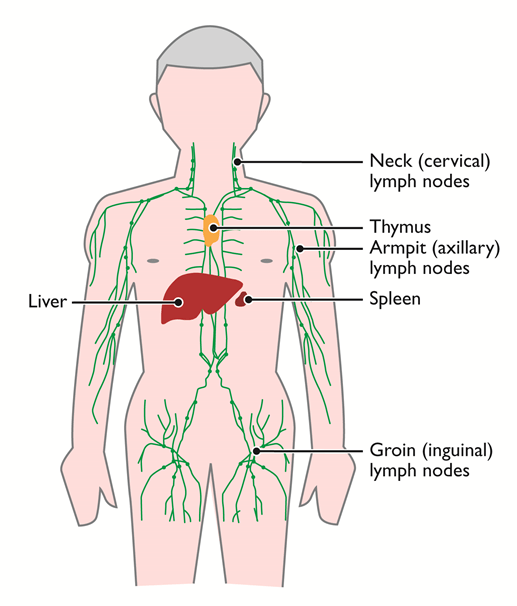
This refers to regional lymph nodes in the body which may have been affected by cancer.
M stands for metastases
This means cancer which has spread to other areas of the body.
Tumour Node Metastasis (TNM) System
| Tumour (T) | Where is the tumour growing into? |
| T0 | No cancer |
| Tis | Cancer cells are within the testes, but they have not invaded the surrounding testicular tissue. |
T1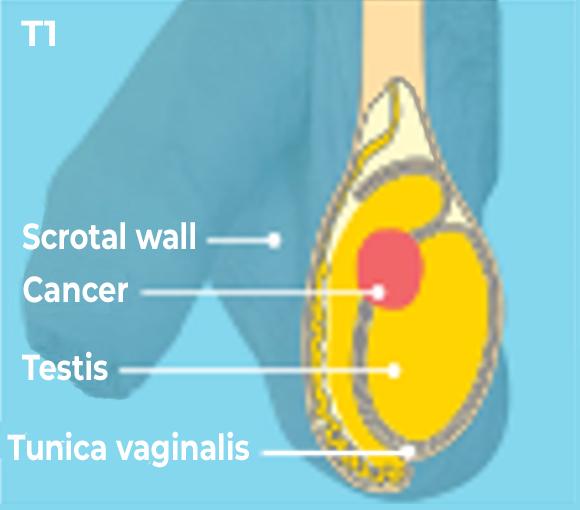 | Tumour confined to testicle and epididymis. |
T2 | Tumour has begun to infiltrate the blood vessels or lymph nodes close to the testicle. |
T3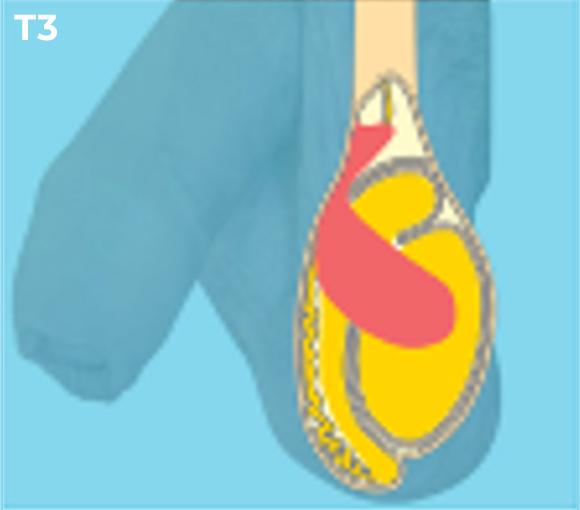 | Tumour has grown as far as the spermatic cord and possibly blood vessels and lymph nodes. |
T4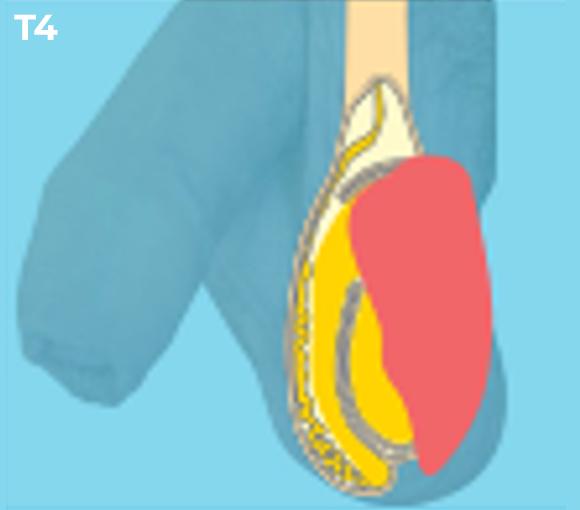 | Tumour has invaded the scrotum. |
| Node | Which lymph nodes contain cancer? |
| N0 | No lymph nodes contain cancer. |
| N1 | Lymph nodes are smaller than 2cm wide. |
| N2 | At least one lymph node is larger than 2cm but smaller than 5cm wide. |
| N3 | At least one affected lymph node is bigger than 5cm. |
| Metastasis (M) | Do other organs contain cancer? |
| M0 | The cancer has not spread to other organs. |
| M1a | The cancer has spread to the lungs or distant lymph nodes furthest away from the testicle. |
| M1b | Organs such as the liver or brain have been affected. |
| Blood tests (tumour markers) The results of blood tumour markers can also be added to this system. This is written as S where S stands for Serum markers. | S0: Tumour marker levels within normal limits S1: LDH < 1.5 X Normal and HCG < 5,000 and AFP < 1,000 S2: LDH 1.5-10 X Normal or HCG 5,000-50,000 or AFP 1,000-10,000 S3: LDH > 10 X Normal or HCG > 50,000 or AFP > 10,000 |
Testicular cancer can also be divided into three stages.
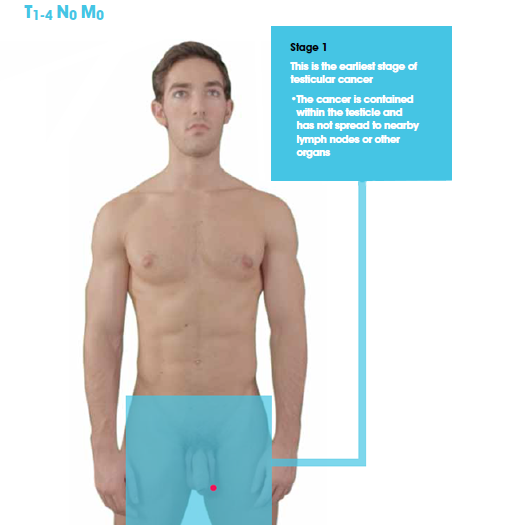
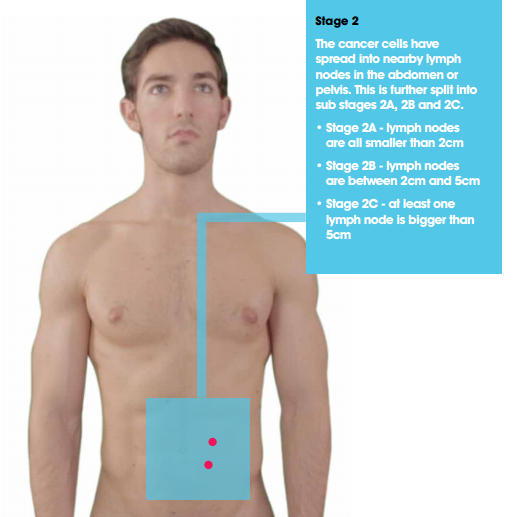

Reviewed 1/2024
